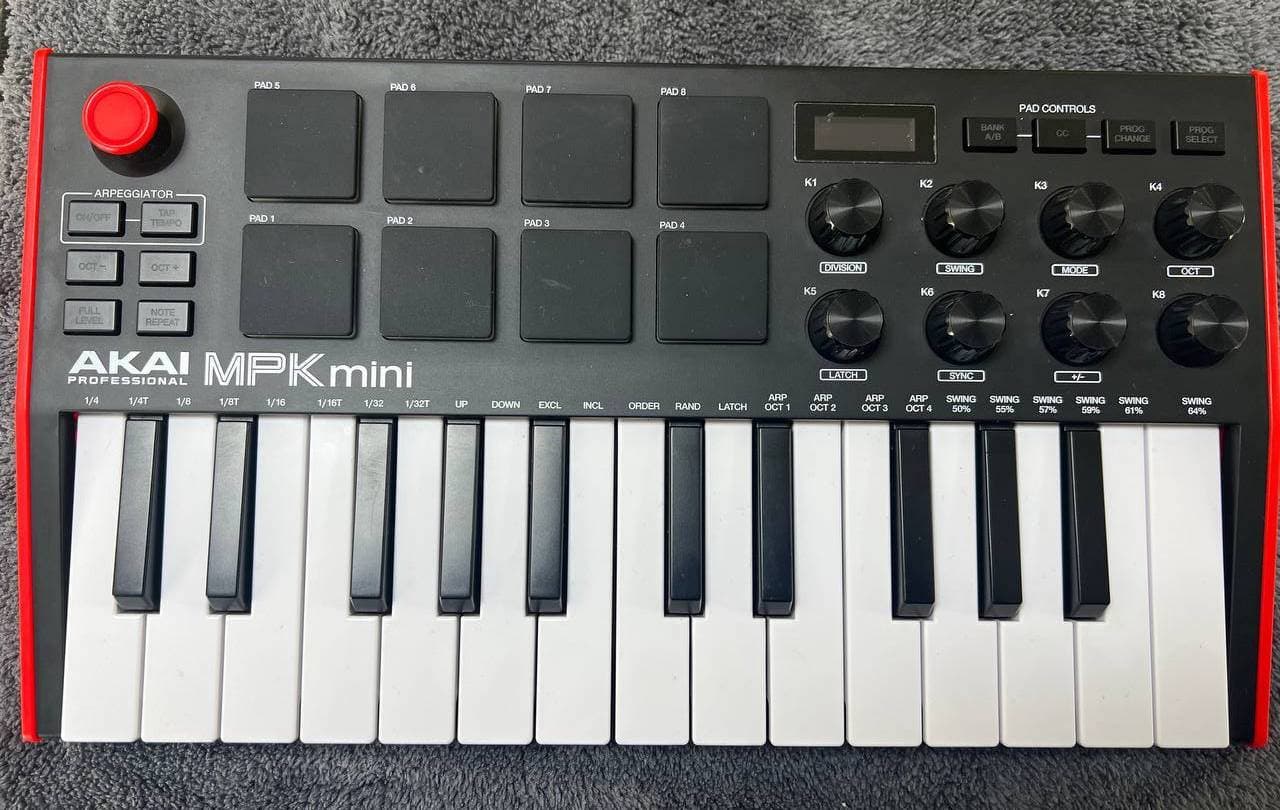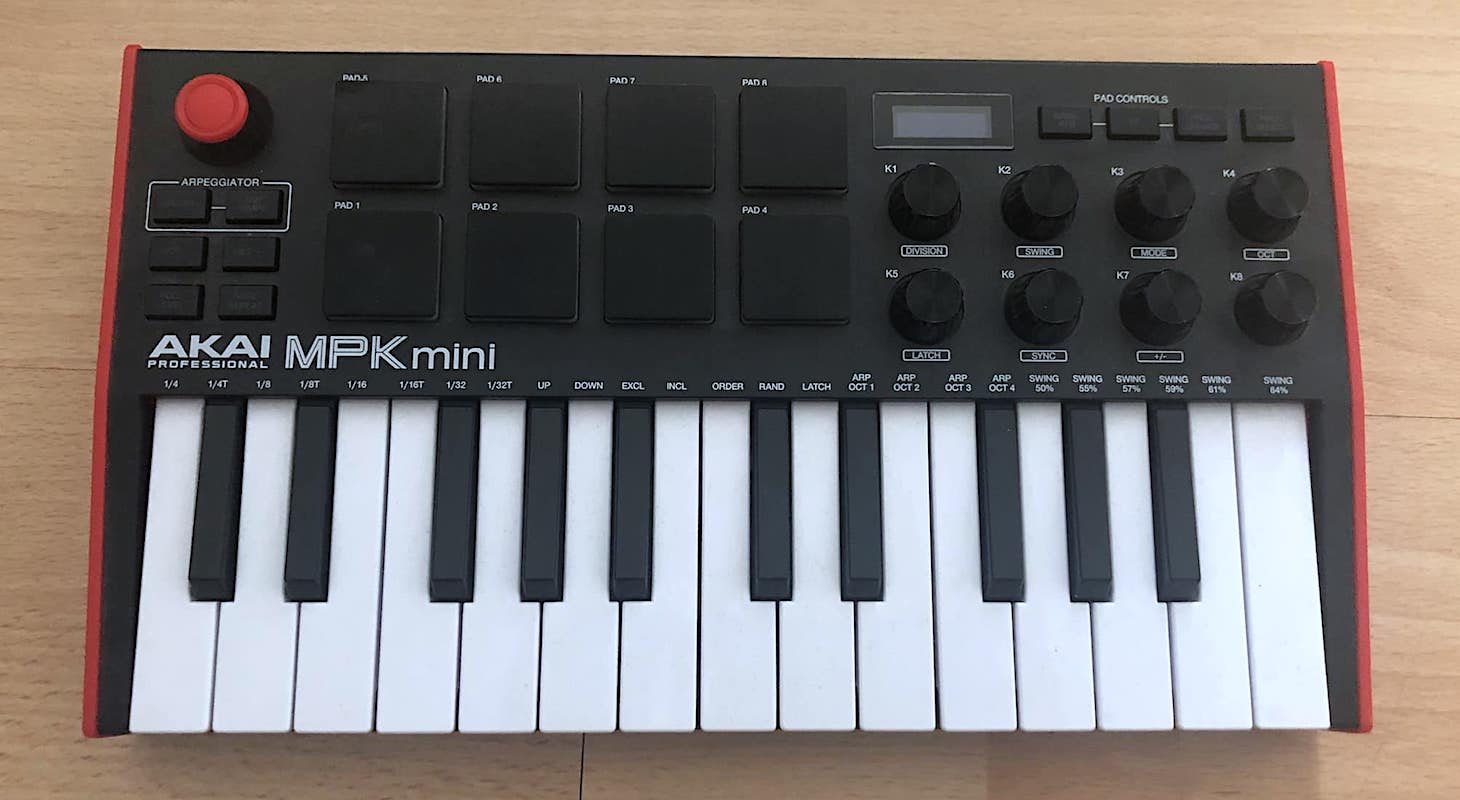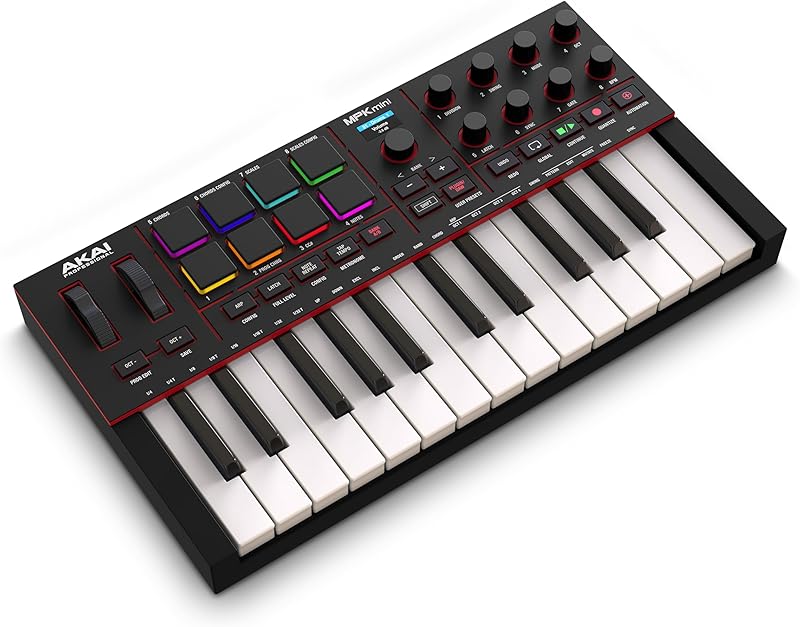It may come as no surprise that I'm raving about another AKAI product. If you've read my other articles and reviews, you'll know I consistently praise this brand because they've been invaluable throughout my music production career — perhaps the most used brand in my arsenal.
Best Portable MIDI Keyboard?
For producers, artists, and songwriters who create beats while traveling between studios, cities, or countries, the Akai MPK Mini Mk3 might be one of the best gear investments you can make.
Let me show you how I use it and why it's become essential for my mobile setup.
But what about the Mk4?
I played this one recently. To be honest, it's a downgrade to me. The keys are fully weighted and feel very cheap/heavy compared to the Mk3. They also got rid of the joystick, which was much better for programming and made it unique. And they complicated the arpeggiator in a very clunky way, lots of weird menu dives. So I actually think the Mk3 is better for beginners, and in general.
Top 4 Reasons It’s Essential
Reason #1: Real MPC Pads
I specified "real MPC pads" rather than just “pads" or "drum pads" for a reason. It's like your favorite soda — you've probably tasted imitations that try to come close but fall noticeably short.

Akai MPK Mini
That's exactly how I feel about many manufacturers who add similar-looking drum pads with identical layouts, yet somehow miss capturing the authentic feel of a real Akai MPC. This raises important questions: Why does using real MPC pads matter? Isn't it simply about skill? Don't all pads essentially do the same thing?
In my experience, the answer to these questions is clearly no. I'm not sponsored by Akai — this is simply my honest assessment after more than 20 years of using various drum pads. MPC pads remain the unrivaled gold standard for drum programming.
I believe I've finally understood their secret: it's the unique combination of velocity response and note-off response. If you haven't played an Akai MPC before, you might not be familiar with what "note off" actually means.
Note off goes beyond velocity — it refers to how quickly a drum sound cuts when you lift your finger from the pad. Most drum samplers utilize a gate function, essentially a quick, adjustable envelope that immediately cuts the sound when it detects your finger leaving the key or pad.
MPC pads offer the best release response of any pad or key I've used. You can feel this distinction when playing an MPC pad, particularly when using the MPC hardware bundled with Akai products, though it works effectively with all DAWs and drum rack-style samplers.
This differs significantly from realistic drum software like Addictive Drums 2 or BFD 3, which are designed to emulate real drums with natural decay. While adjustable, they don't respond like one-shot samples do. I'm referring specifically to how plugins like Battery 4 by Native Instruments, Ableton drum racks, or Akai's own MPC plugin handle one-shot samples.
For those who create custom kits — whether by downloading one-shots from splice.com or trimming samples from your own drum machines to separate kicks, snares, hats, etc. — your preferred loading destination becomes your drum sampler of choice.
I frequently use Battery 4 because of its speed and organizational capabilities. When I'm traveling or in sessions without my full MPC hardware, I default to Battery 4 with Ableton. For dedicated beat-making sessions where my work will be recorded into another session, I'll use Akai's MPC software.
While these pads excel with one-shot samples or premade kits loaded into your preferred drum sampler, you can still perform impressive finger drumming that sounds remarkably realistic with full drum libraries like Addictive Drums—the response is just different.
The entire MPC culture centers on how pads trigger one-shot samples—that's my main point. Another often-overlooked application for Akai drum pads is playing basslines.
When working with sub-bass hip-hop style sine waves or deep 808-style chromatic kicks that function as basslines, the touch and responsiveness of these pads is unmatched. There's something uniquely natural about playing low-end and sub kicks or bass through these pads that feels constrained even on well-respected brands like Arturia.
Akai created the original, and they remain the best.
Reason #2: Arpeggiator Feel and Swing
The second reason why AKAI has always been my essential production rhythm instrument brand is its legendary and authentic swing feel. When I got my first MPC 3000 in 1998, I immediately noticed the difference between AKAI's swing and those of other software and hardware drum machines.
The AKAI feel was simply more musical — there's no better way to describe it. I've spoken with Roger Linn, creator of the Linn drum machine who later collaborated with AKAI to develop the first MPC 60 and then the 3000.
He explained that AKAI feels so natural because instead of basing the sequencing or quantization on pure mathematics like most DAWs do, he studied real funk drummers, noting exactly where they sped up and slowed down. While he wouldn't reveal which specific beats he used to create his swing — that's proprietary knowledge — he explained that AKAI machines have a somewhat counterintuitive swing.
Even when you're putting notes in time, some 16th notes might be slightly rushed while others might be slightly delayed compared to what you played, yet somehow the result always sounds better than your original performance.
I know exactly what he means. That's why I love that AKAI incorporated their legendary swing into the arpeggiator of this compact keyboard. I would have bought it just for the pads alone without needing an arpeggiator, but the fact that they included their flagship MPC swing (from 50% to 64%) allows you to create impressive sequences and arpeggios simply by holding down notes.
This keyboard is so effective that I use it even in my main studio surrounded by analog hardware. I still rely on the MPK mini to create arpeggios from my other synthesizers — that's how good this arpeggiator is.
For instance, I have a vintage Roland Juno 106 without an arpeggiator. My solution is to place the MPK mini on top of it where there's space on the left side of the keyboard.
I don't even use the Roland's keys; I just use the MPK mini to trigger sequences that play through the analog Juno's sounds and oscillators.
I then capture these sequences and create loops in Ableton. It's a brilliant way to get more out of your hardware and vintage synthesizers. For those who use lots of hardware, you understand the issue — very few vintage instruments have arpeggiators, which alone makes this keyboard worth it.
Reason #3: Joystick Modulation
If you've only used a few controllers and keyboards, you're probably familiar with traditional modulation and pitch wheels on the left side of the keyboard. The modulation wheel moves smoothly up and down, while the pitch wheel stays centered and springs back after you move it. These have been the standard controls on most keyboards throughout history.
Several companies have used joysticks instead, and AKAI's decision to implement a joystick on their MK mini reveals their vision for users. They're catering to musicians who want more than just a way to input notes into a DAW or an alternative to track patterns with laptop keyboards.
The four-way joystick that controls both pitch and modulation — plus other assignable functions — encourages creative experimentation with this controller.
This design choice elevates the MPK mini from a simple computer peripheral to a professional instrument. It promotes the mindset of performing modulation and pitch changes rather than just programming them with a mouse without feeling or hearing the music.
AKAI thoughtfully positioned the joystick next to the drum pads, not the infinity knobs. This layout assumes you'll use your left hand on the joystick while performing beats or basslines with your right, allowing you to create modulation effects as you play.
This design philosophy speaks volumes to me — it feels like an instrument made for music creation, not just computer interaction.
As someone who loves vintage sounds and creates electronic music, I use the joystick frequently, especially with high-quality emulations from Arturia or G-Force that model legendary keyboards like the Jupiter-8 and Minimoog.
The ability to modulate filter cutoffs, LFOs, vibrato, or adjust drum sound characteristics is incredibly valuable. I would buy this keyboard for the joystick alone.
Remember how I mentioned using both keys and pads to trigger bass sounds, including sub kicks from 808 kits? The joystick is perfect for bass in genres like dubstep and techno, where you often add pitch shifting or LFO modulation to kicks and bass.
Those distinctive dubstep wobbles come from LFO modulation triggered by MOD wheel movements. The joystick's advantage is that it provides simultaneous control, letting you apply both LFO and pitch changes to make low kicks slide between notes — truly impressive.
If you don't currently own a controller with a modulation/pitch joystick, get this keyboard. You'll either love it or hate it depending on what you're used to, but it's worth trying. It genuinely transforms how you perform modulation.
In my experience, the worst approach is blindly automating with a trackpad or mouse. Filter sweeps and LFO changes programmed visually often sound static and generic.
Reason #4: Infinity knobs
Along with my preference for using joysticks for modulation, I strongly dislike knobs with fixed start and stop points. Why? They remind me of Roland gear that was frustratingly confusing—the knob or slider would visually show one position (like the middle of a filter), while you were hearing something completely different.
When you touched the filter slider, it would suddenly jump to your manual position rather than the saved preset. This jarring jump happened with every adjustment on a Roland synth. Vintage Roland users know exactly what I'm talking about.
Eventually, controller companies abandoned these limited knobs in favor of infinity knobs, which make much more sense. With an infinity knob, you don't need to worry about its physical position — you simply focus on where you want the sound to go.
Though it seems obvious now, it's surprising how long it took for infinity knobs to appear. Moog Music pioneered this concept when they created the Moog Source in the '80s.
The Moog Source looked like a surreal, alien synthesizer with a single large infinity knob on the left side. This one knob controlled every parameter on the synth, while the rest were just touch buttons. I bought a used one precisely for this feature.
What makes infinity knobs superior is that they begin the sweep, panning, or control from zero the moment you touch them. They don't jump to some arbitrary position based on the knob's physical location. It's difficult to explain in writing, but anyone who has programmed parameter changes with knobs understands what I mean.
Infinity knobs were also common in effects units like reverbs and delays. When programming reverb or delay returns, they feel more authentic without fixed starting or stopping points. You never run out of turning space and have to reset your automation.
In every respect, infinity knobs are superior, which is why I'm thrilled they included this feature. It shows that AKAI truly listens to users and draws on their extensive history in musical equipment design — and I appreciate them for it.
A Few Misses
Like everything else in life, nothing is perfect — including this tiny masterpiece of a keyboard. Some limitations aren't the designer's fault; they're simply due to physics.
To maintain the keyboard's compact design while preserving essential features, they had to sacrifice screen space. The tiny display provides only basic information like notepad numbers and knob adjustment levels.
Honestly, I would have purchased this keyboard even without a screen, but compared to alternatives, some users might prefer more display area — so I'll deduct points for that.
The keys are great, despite being mini-sized. As primarily a keyboard player and pianist, I'm rarely enthusiastic about mini keys.
However, in the keyboard's defense, this format isn't designed for performing elaborate piano pieces. Rather, the keys are intended for sketching chords, adding bass lines, and creating simple embellishments.
Though I don't love mini keys, I understand their purpose in this context.
Final Word
My Final Take
Despite the few negative points I've mentioned, I still believe this is one of the best — if not the best — compact mobile keyboards for a modern producer setup.
I mean every word in this review — this little controller is truly that impressive.
You also need to consider its price point. I would buy it for any single feature alone, but especially for the pads. I actually own an older set of just the pads (which connect via USB) because I'm such a fan, and those alone cost nearly the entire price of this keyboard, which offers so much more functionality.
I'm excited for you all to try it and hope it elevates your beat-making experience and tracks to the next level!



